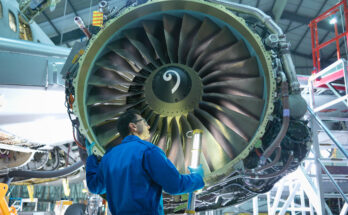by Matthew Beres, Airborne Retrofit & Modernization Analyst, Forecast International.
Airlines around the world are moving toward economy seating densification. This doesn’t necessarily mean less comfort for passengers. Rather, it is an effort to decrease weight on the plane (with lighter seats), and to increase the number of passengers that can fly in economy sections. On the flip side, premium seating is going through a renaissance. Operators of mid- and widebody airliners are retrofitting their premium seating to accommodate a growing market demand for luxurious accommodations.
Installation of premium seats is a relatively expensive endeavor. While new economy seats can cost $30,000-$80,000 per seat to install, premium seats can range from $150,000-$300,000 to install. These prices may include rewiring, ductwork changes, and reinforcement of cabin floors. Other changes are often simultaneously made to storage compartments, lighting, and in-flight entertainment (IFE) systems.
There are various seating designs, and floor layouts, that maximize space while offering a certain degree of luxury as expected by premium customers. Singapore Airlines recently revealed its A380 fleet’s first- class suites. Designed by Pierrejean Design Studio and manufactured by Zodiac Seats UK, the new suites offer a bed, Poltrona Frau leather chairs, and 32-inch HD swivel monitors, among a number of specialized amenities. FYI – Italian leather seating is a huge trend right now and appears to be the standard for premium seating.
A330, A380, 757, 767, and 777 fleets are all undergoing premium cabin retrofits. Although it appears premium seating retrofits may be reaching the down side of a retrofit activity peak, many seating companies are entering the retrofit market, and others are joining forces. These include companies that create components for seats, companies that manufacture seats, cabin designers, in-flight entertainment manufacturers, and companies that provide installation services. Rockwell Collins’ merger with B/E Aerospace was partially meant to capitalize on the seating market, and should make for some great new seating products. ST Aerospace has steadily been working to vertically integrate its seating business, and push further into the airline cabin retrofit market.
Although airlines may be entering the downside of a retrofit peak, activity will continue in line with any technological advancements or cultural trends. Airlines that push the boundaries of premium comfort create a competitive advantage for themselves, and therefore spur further retrofit activity in the rest of the market. This will certainly be the case with Chinese and Indian airlines, as their growing premium customer bases look for the highest quality seating and cabin experience.
Forecast International’s Airborne Retrofit & Modernization Forecast provides operators in the military and commercial aviation sectors with the information they need to maximize their current investments rather than expand their fleets, a trend that is opening up multiple opportunities for the expansion of retrofit and modernization programs. It offers a one-stop service for tracking the status of commercial and military R&M programs in progress worldwide, and pinpoints key developments in the aviation industry that will impact the market in the future.

A military history enthusiast, Richard began at Forecast International as editor of the World Weapons Weekly newsletter. As the Internet grew in importance as a research tool, he helped design the company's Forecast Intelligence Center and currently coordinates the EMarket Alert newsletters for clients. Richard also manages social media efforts, including two new blogs: Defense & Security Monitor, covering defense systems and international issues, and Flight Plan, which focuses on commercial aviation and space systems. For over 30 years, Richard has authored the Defense & Aerospace Companies, Volume I (North America) and Volume II (International) services. The two books provide detailed data on major aerospace and defense contractors. He also edits the International Contractors service, a database that tracks all the contractors involved in the programs covered in the FI library. More recently he was appointed Manager, Information Services Group (ISG), a new unit that encompasses developing outbound content for both Forecast International and Military Periscope.



